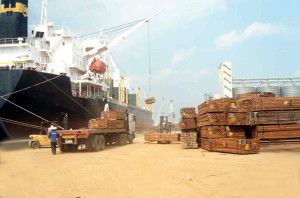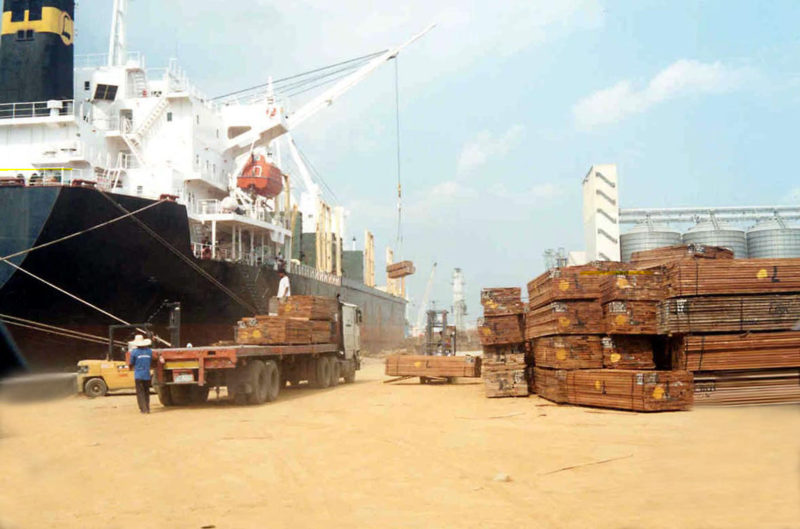
Philippine port stakeholders have unveiled a laundry list of immediate and long-term measures that the government, especially the Philippine Ports Authority (PPA), can undertake to make the country’s ports more productive and efficient as cargo volumes steadily grow.
Close collaboration among the PPA and terminal operators and cargo handlers is needed to help ports accommodate the increasing volume of trade, Atty. Maximino Cruz, Association of International Shipping Lines (AISL) general manager, told PortCalls in an email.
Dredging of ports and acquisition of modern cargo-handling equipment are necessary in view of the arrival of bigger vessels, Cruz said.
Furthermore, he said, the government should take into account two types of infrastructure development in its long-term planning—physical and administrative.
Physical infrastructure development requires building more roads, bridges, inland clearance depots, off-dock facilities, and warehouses as well as establishing communication facilities in and out of ports to ensure market access, Cruz noted.
Administrative infrastructure development, on the other hand, involves a comprehensive review of the law, rules and regulations that impact the flow of trade and commerce in the Philippines.
The much-anticipated passage into law of the Customs Modernization and Tariff Act is a good start, but it should not end there, the AISL executive said.
“An assessment of the debilitating effects to the movement of trade from the unbridled exercise of the powers of local government units under the Local Government Code should also be seriously undertaken,” Cruz explained.
The conflict between local government units and the national government became evident last year when the Manila city government imposed a daytime truck ban on its major streets leading to massive port congestion that affected many businesses nationwide. It took public and private multisectoral groups many months to lick the congestion problem.
Cruz said there should be a continuing review of existing laws and regulations as well to ensure they are responsive and conducive to the demands of trade.
“What makes this type of infrastructure development more challenging is the need to exert a strong, decisive political will from the government leadership. And this will not be easy,” he pointed out.
Sorry state of domestic shipping
Philippine Inter-island Association (PISA), the umbrella organization of the country’s maritime associations, had more pressing and immediate concerns.
In a letter to PPA provided to PortCalls, PISA enumerated a number of concerns and suggestions related to domestic shipping, including berthing issues in some ports.
In particular it underscored the problem of long queues for berthing in Iloilo port, a problem for container liners since May 2014.
The Philippine Liner Shipping Association (PLSA), an aggrupation of domestic container lines and one of the organizations under PISA, has previously apprised PPA of the berthing problem, which has resulted in vessel queues lasting from two to seven days.
“Despite PLSA discussions on the matter with the PPA Iloilo PM (port manager) Rosenda Sumagaysay, to date no concrete action has been recommended to resolve this problem,” PISA claimed.
Aside from Iloilo, PISA is seeing growing berthing problems in other major ports such as Zamboanga, Manila, San Jose Mindoro, General Santos, Dumaguete and Davao. Roll-on/roll-off operators are likewise encountering similar problems on the Batangas-Calapan and Matnog-Samar routes, among others.
In light of this, PISA is requesting that PPA allow domestic vessels to use foreign berths at domestic rates “if the berths are not in use anyway.”
It further recommended that the draft design of ports be aligned to the requirements of new and bigger ships, and that dredging become a regular maintenance activity.
“Waiting for high tide to prevent grounding is a waste of time. Moreover, there are ports that cannot be utilized because of shallow draft,” PISA pointed out.
Revisit policies, tariffs, contracts
PISA said ports should have at least two cargo handling operators (CHOs) to ensure competition. “Otherwise, cargo handling operations become a monopolized service.”
PPA should likewise evaluate productivity of CHOs, and set a minimum productivity rate for their compliance in the cargo handling contracts, PISA said.
CHOs should be required to provide adequate and appropriate equipment, too, to meet the needs of all types of vessels.
To simplify port tariffs, PISA suggested that PPA “study the possibility of consolidating port charges for cargo except storage charges.” Instead of charging dock handling, wharfage and other charges, a single terminal handling charge can be imposed.
PPA also ought to monitor the “introduction of extra services rates at domestic ports.”
A review of the pilotage policy is another must, particularly suggestions to make pilotage an optional service in the domestic trade. “Presently, pilotage and tug assistance service providers in ports are charging exorbitant fees,” PISA claimed.
Current rules require all vessels, both foreign and domestic, to contract pilots when navigating Philippine waters. However, PISA said domestic liners have been plying the same routes for years and already know how to navigate the waters, and thus don’t need pilotage services anymore.
Furthermore, the group suggested that the government “establish sea lanes, and vessels should be required to have position tracking equipment with unique identification number.”
This way government can track all vessels in our territory and be able to identify threats to navigation. “It can also be a useful tool against smuggling,” PISA said.
Another of PISA’s concern is the way passenger ships in the Batangas area are supposedly not observing the Traffic Separation Schemes (TSS) rules. The Vessel Traffic Management System (VTMS) “does not call the attention of the erring vessels,” it said. PISA noted it is VTMS’s responsibility to ensure proper monitoring and management of traffic, especially of vessels transiting congested sea lanes.
Moreover, the timelines for installing port infrastructure and providing cargo handling equipment “have not been sufficiently complied with” by the Manila North Harbor Port, Inc. (MNHPI). PISA added that “MNHPI systems and operational procedures are frequently changed, causing much confusion, traffic inside the port and unnecessary delays to port users.”
Increasing stakeholder participation
Meanwhile, PISA said PPA should guide shipping lines on the garbage collection services rendered by Golden Dragon “considering that the said company has been the subject of a legal dispute on ownership.”
In view of limited government resources, the group likewise pushed for a comprehensive master plan on port modernization and development for major ports such as Iloilo, Cagayan de Oro, Davao, General Santos, Zamboanga and Ozamiz either through public-private partnership or any government initiative.
Lastly, PISA asked to be allowed to designate a representative at PPA Board meetings to observe and participate in discussions covering port infrastructure development, policies, and procedures. Currently, only one representative from the private sector sits at the PPA Board.
PISA said it is “committed to continue to cooperate with the Authority towards achieving a vibrant maritime industry offering competitive and sustainable services for our domestic trade.”
For his part, AISL’s Cruz said, “I would rather see PPA’s active role in promoting Philippine ports as gateways of international trade.”
This, Cruz said, requires PPA to be “more proactive in ports development and act as the chief marketing arm of the Philippine government in enticing more ships’ calls in the country.”
He urged PPA to give incentives to industry players taking advantage of the country’s strategic position in global trade, adding that “I can see that the present leadership of PPA appears to be heading in this direction.”
Cruz said that aside from Manila ports, the ports of Subic and Batangas, as well as the fast-developing Mindanao ports, show promise as potential hubs. “Other ports in the Philippines can still be considered dormant at the moment but I do believe that once the ASEAN (Association of Southeast Asian Nations) economic integration takes a firm footing in the Philippines, these ports will soon play an active role in the ASEAN trading community,” Cruz said.
PPA celebrated its 41st anniversary on July 11. PPA general manager Atty. Juan Sta. Ana has encouraged the authority’s officials to make “one big push for 2015” and “again try to find ways of providing excellent port services which correspondingly would result in increased customer satisfaction, port productivity and efficiency, and higher income for the organization.”— Roumina Pablo





